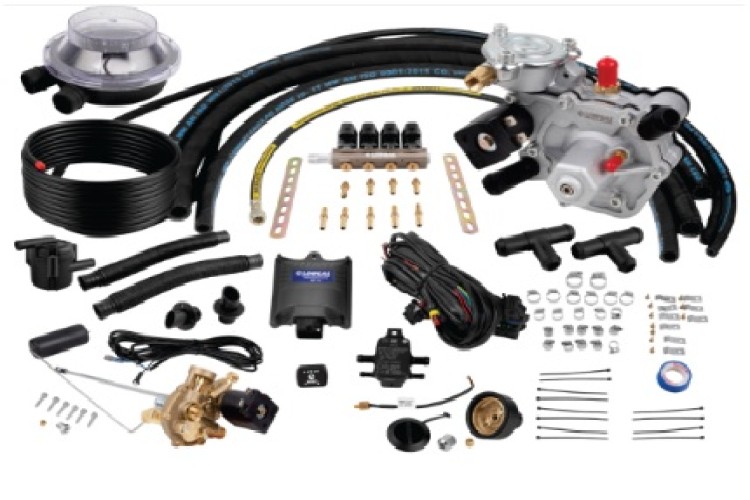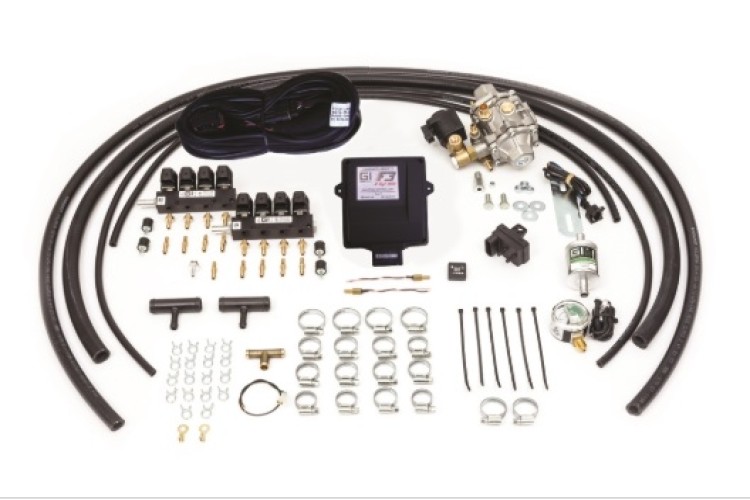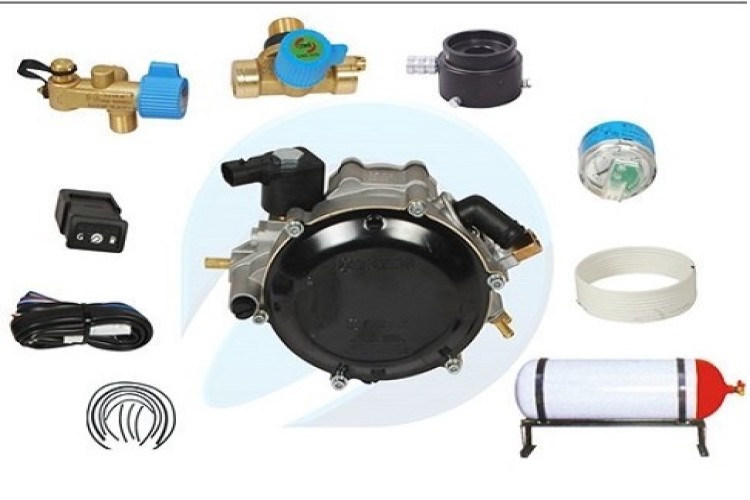
CNG CYLINDER
Technical specifications of a CNG (Compressed Natural Gas) cylinder for automotive use, compliant with international standards:
1. General Specifications
- Type:
- Type 1: All-metal (steel/aluminum) – Heavy, low-cost.
- Type 2: Metal liner + hoop-wrapped composite (fiberglass/aramid) – Lighter.
- Type 3: Metal liner + full-composite wrap (carbon fiber) – Lightest, high-cost.
- Type 4: Polymer liner + full-composite wrap – Ultra-lightweight (rare in automotive).
- Working Pressure: 200–250 bar (20–25 MPa).
- Burst Pressure: ≥ 1.5× working pressure (e.g., 375 bar for a 250-bar cylinder).
- Test Pressure: 300 bar (hydrostatic test every 3–5 years).
2. Material & Construction
- Liner Material:
- Type 1: Chromium-molybdenum steel / aluminum.
- Type 3/4: Thin steel/aluminum liner + carbon/glass fiber epoxy wrap.
- Composite Layers: Carbon fiber, fiberglass, or aramid (Kevlar).
- Corrosion Protection: Powder coating (steel) or inherent (composite).
3. Capacity & Dimensions
- Water Capacity (Nominal):
- Common sizes: 50L, 65L, 80L, 100L.
- CNG Storage (at 200 bar): ~10–12% of water capacity (e.g., 50L ≈ 10–12 m³ gas).
- Shape:
- Cylindrical (standard).
- Toroidal (doughnut-shaped for spare wheel well).
- Weight (Empty):
- Type 1: 60–100 kg (steel), 30–50 kg (aluminum).
- Type 3: 20–40 kg (carbon fiber).
4. Safety & Certifications
- Standards:
- ISO 11439 (Global).
- ECE R110 (Europe).
- DOT-NG-2 (USA).
- AS/NZS 2739 (Australia/NZ).
- Valve Assembly:
- Manual Shut-off Valve (emergency isolation).
- Pressure Relief Device (PRD): Activates at 1.5–2× working pressure or 110°C.
- Thermal Fusible Plug: Melts at 110°C to release gas in fire.
- Impact Resistance: Must survive crash tests (e.g., 30G acceleration).
5. Performance & Environment
- Temperature Range: -40°C to +65°C (operational).
- Gas Composition: Compatible with methane (CH₄ ≥ 90%) + impurities (CO₂, N₂, etc.).
- Fatigue Life: 15,000–20,000 pressure cycles (fill/empty).
6. Installation & Maintenance
- Mounting: Secured with high-strength brackets (4–8 bolts, vibration-resistant).
- Inspection Interval: 3–5 years (hydrostatic test + visual check).
- Service Life:
- Type 1: 15–20 years.
- Type 3/4: 20–25 years.
7. Markings & Labeling
- Mandatory Engravings:
- Manufacturer name.
- Serial number.
- Working pressure (bar).
- Test date & next due date.
- "CNG" or "NGV" (Natural Gas Vehicle) symbol.
A CNG (Compressed Natural Gas) cylinder is a high-pressure storage tank used in vehicles powered by CNG as an alternative to petrol or diesel. Constructed from durable materials such as steel or composite fiber, these cylinders are designed to safely store natural gas in a compressed state at pressures up to 200-250 bar. CNG cylinders are equipped with essential safety features, including pressure relief devices, burst discs, and shut-off valves, to prevent accidents and ensure reliable performance. They come in various sizes and are usually installed in the vehicle's trunk or undercarriage, depending on space and design. CNG cylinders are thoroughly tested and certified to meet international safety standards, making them a key component in promoting cleaner, more environmentally friendly transportation.




